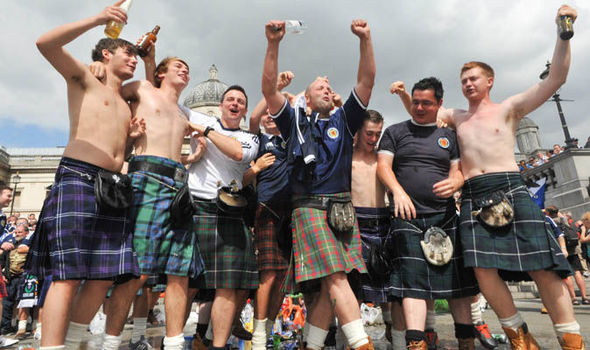Scottish Kilts are the traditional costume of Scotland and, throughout various times in history, they’ve been dressed with respect, as a fashionable fashion statement, as well as a symbol of protest. They’re still manufactured to this day and are made with care. Of course, many of us are faced with a single question: What should the typical Scot wear underneath his kilt?
1. Kilts are a symbol of long-standing historical and cultural roots in Scotland. They’re a long-standing symbol of patriotism and are well-maintained between wears.
2. The word “kilt” is a derivative of the old Norse word kilt which means ‘pleated’, and it is a reference to garments that are worn tucked away and wrapped around the body. The Norse were everywhere in Scotland and were generally not invited, and it’s an irony that the word”kilt” is derived from the same word.
3. The first time kilts were mentioned was in 1538. These were full-length clothing for Gaelic-speaking Scots Highlander men. The knee-length kilts we have today weren’t up until the beginning of the 18th century.
4. In the beginning, kilts could be either white or brown. Later, they were green, brown, or black. Clanspeople made use of mosses, plants, and berries for dyeing the wool. As time passed they created plaids that were specific to clans, with colors that were likely based on what natural dyes were in close proximity.
5. The plaid belt was popular among Highland men in the 17th century. (By 1822 the majority of them wore it to commemorate events.) The “great kilt” emerged as a symbol of wealth. In Gaelic, the word was”breacan-anfeileadh” or tartan wrap. It also had a woman’s version which was popular at this time. It was referred to as an arisaid. It was worn to the ankles and was made of white tartan with broad-spaced patterns.
6. In the latter part of the 17th century the small kilt, also known as a Phillabeg first became popular. This was the lower part of the kilt. It was folded into folds, tied at the waist and slung close to the knee. A separate cloth was draped over the shoulder to protect warmth.
7. King George II, who was trying to suppress Highland culture, passed his own Dress Act of 1746. It was now illegal for Highland regiments to wear clothes similar to any kind of Highland dress, such as the tartan kilt. King George’s enemies had a plan to replace him with Jacobite armies. In a state of panic, he pondered using the laws to prohibit the use of kilts in Highland armies. This way it was possible to determine those who were in support of the Jacobite decision and then eliminate the Jacobite position. Prohibition was not a good thing. People who did not have Jacobite beliefs dressed in them as a romantic style declaration. Some wore kilts in protest of the widespread English oppression. It was removed in 1782. It was a long time for a non-essential ban to have been in force.
8. Following it was banned, the kilt was an iconic emblem of Scottish identity. Tartan patterns were associated with specific families, clans, and even regions. There are now 3,500 distinct tartan plaids for families. The item takes between 20 and 25 hours to create They are usually made by hand and the tartan pattern cannot be broken. They feature 29 pleats and are made up of around eight yards of material.
9. A good kilt is typically carried with a sporran. It’s an elongated bag that is worn around the waist or over the top of the kilt. This is the Gaelic word meaning purse. A kilt pin binds the two pieces in place at the front. a Sgian dubh (see-an doo) is a dagger of a smaller size that is placed inside the socks.
10. BOUND ROUND:

What is the most popular thing men wear under their kilts? We are eager to learn.
55% of men wearing kilts claim to wear dark underwear. 38% wear a commando. 7 percent wear shorts or tights.
The Scottish gentlemen who wear kilts are sure to learn that women are huge fans of the kilt, Scottish women in particular. 91% of women say they’re very attractive–they might be waiting to see a glimpse, too. 67 percent of Scotsmen consider it to be robust and patriotic. The majority of women polled by the Scottish government Scotland consider that there is nothing to be worn under that gorgeous kilt. Are we shocked? Perhaps not!
